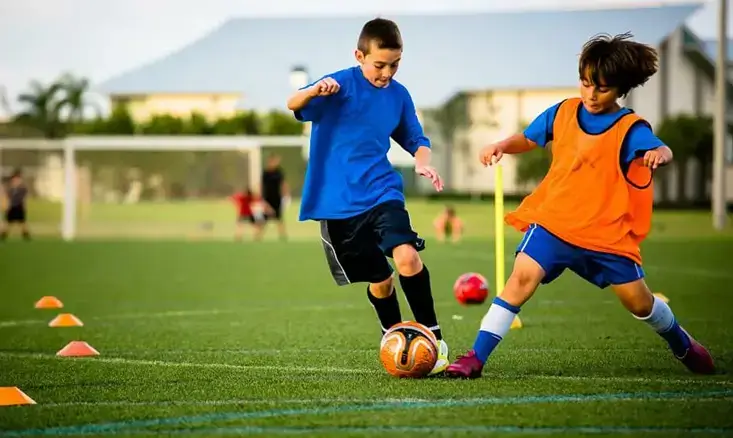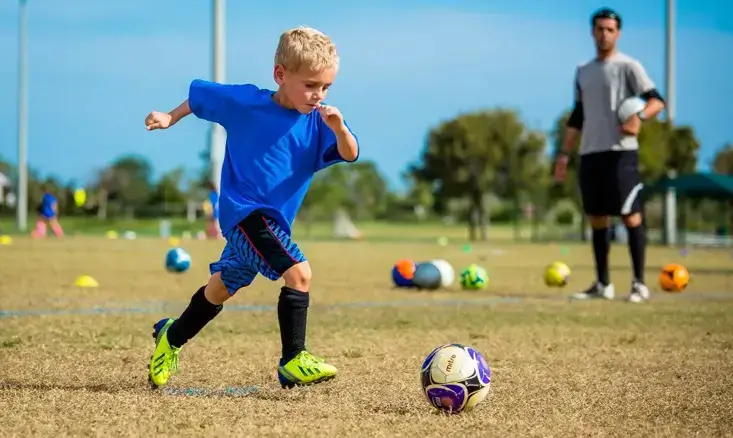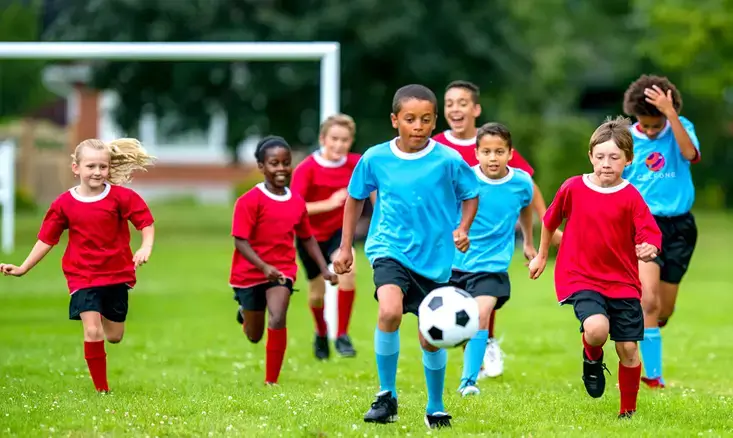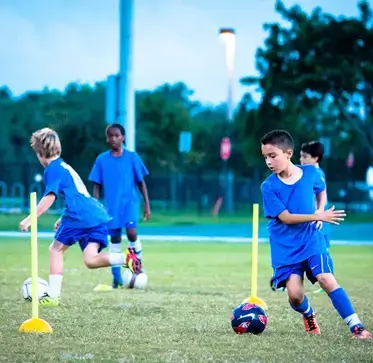CRFC BLOGS
LATEST BLOGS & NEWSLETTERS
Why Small-Sided Games Are Perfect for Youth Soccer Development
Small-sided games (SSGs) have become important to youth soccer development. With fewer players on smaller fields, these games offer a fun and effective way for young players to learn, grow, and enjoy the game.
What Are Small-Sided Games?
Small-sided games are soccer matches with fewer players on each team, typically ranging from 3v3 to 9v9. These games take place on smaller fields appropriate for the player’s age and skill level. Unlike the traditional 11v11 format, SSGs are designed to give every player more involvement in the game, maximizing touches on the ball and opportunities to participate.
The Importance of Small-Sided Games
1. More Ball Touches for Every Player
In traditional soccer formats, many players, especially beginners, often spend much of the game without touching the ball. Small-sided games change this by increasing players’ chances to interact with the ball.
2. Enhanced Decision-Making Skills
In small-sided games, the reduced number of players means each one has to make more decisions in a shorter time. Players learn to:
- Find space on the field.
- Decide when to pass, dribble, or shoot.
- React to their opponents’ moves.
This quick decision-making builds soccer intelligence, which is essential for success in the sport.

3. Development of Technical Skills
Players improve their technical skills with more touches on the ball and frequent involvement. Small-sided games encourage:
- Dribbling and ball control in tight spaces.
- Accurate passing and receiving under pressure.
- Shooting precision with limited time to act.
Because of the smaller field size, every movement matters, which forces players to focus on refining their skills.
4. Improved Physical Fitness
Small-sided games keep players constantly moving, unlike larger games where players might wait for the ball to come their way. The smaller field size requires players to:
- Sprint short distances.
- Change direction frequently.
- Keep pace with the fast-moving game.
This continuous activity helps improve their stamina, agility, and overall fitness.
5. Boosts Confidence and Creativity
Small-sided games create a low-pressure environment where young players can experiment and take risks. Whether trying out a new dribbling move or going for a long-range shot, players develop confidence through trial and error.
Additionally, players experience more success in scoring goals or making key passes, which builds their confidence and love for the game.

Benefits for Coaches, Parents, and Teams
For Coaches
Small-sided games allow coaches to focus on specific skills and tactics. For instance:
• Defensive drills
Players can practice positioning and marking in small groups.
• Attacking plays
Coaches can teach passing combinations and movement off the ball.
• Transition strategies
Players learn how to quickly switch from defense to attack and vice versa.
Coaches also have more opportunities to give individual feedback, ensuring every player benefits from the session.

For Parents
Parents often worry about their children feeling left out in large games. Small-sided games address this concern by ensuring every player is actively involved. Parents also enjoy watching their kids develop teamwork, confidence, and technical skills in a fun and supportive environment.
For Teams
Small-sided games promote teamwork. Players learn to rely on one another, communicate effectively, and work together to achieve their goals. This strengthens team bonds and creates a positive team culture.

Conclusion
Small-sided games at CRFC camps are the perfect training tool for youth soccer development. They provide young players with more ball time, improve decision-making, enhance technical skills, and boost physical fitness – all while keeping the game fun and engaging.
FAQs
What are small-sided games in soccer?
Small-sided games (SSGs) are soccer matches played with fewer players (e.g., 3v3 to 9v9) on smaller fields. They give young players more ball time, faster decision-making practice, and better skill development.
Why are small-sided games better for young soccer players?
SSGs help players get more touches on the ball, improve their passing, dribbling, and shooting, and make quicker decisions under pressure. This helps them develop faster compared to traditional 11v11 games.
How do small-sided games improve decision-making?
With fewer players, each one is involved more often, forcing them to think quickly, find space, pass, dribble, and shoot under game-like pressure. This builds soccer intelligence.
Do small-sided games help with fitness?
Yes! Because the field is smaller and play is constant, players sprint, change direction, and stay active throughout the game. This improves stamina, agility, and overall fitness.
How do small-sided games help with confidence?
SSGs allow players to experiment with new moves, take more shots, and feel more involved. More success (scoring, passing, or dribbling well) boosts confidence and creativity on the field.

Did you find this useful?


